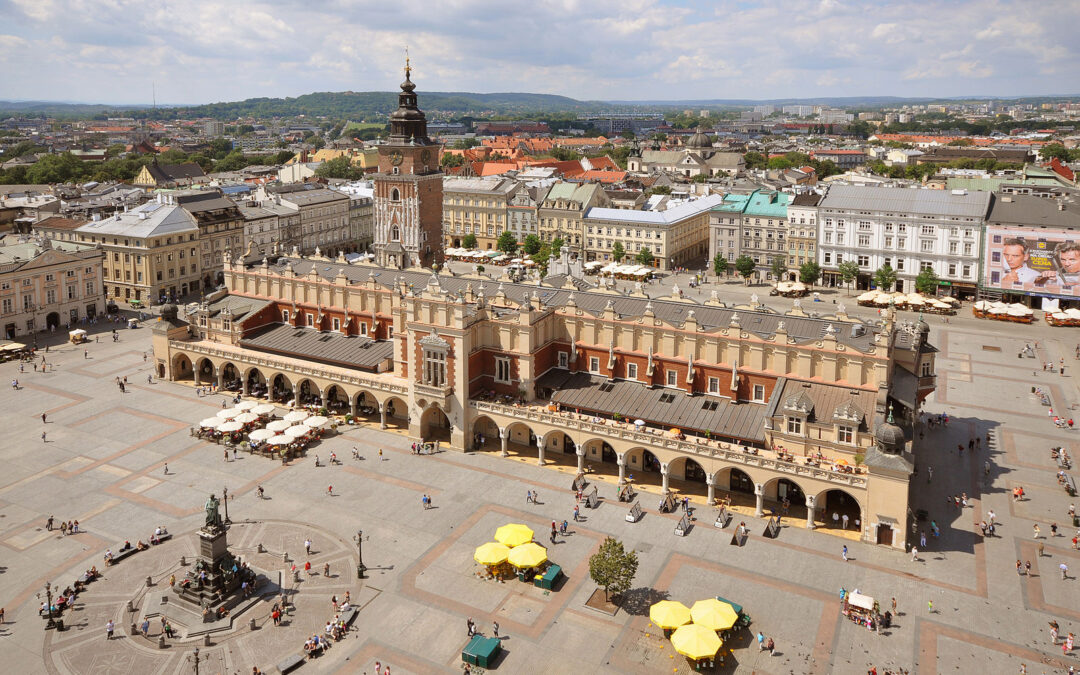Just under eight million tourists visited Kraków in 2020, a drop of almost half compared to the previous year. As a result, the city – which is Poland’s leading tourist destination – faces an estimated four billion zloty (€884 million) shortfall in revenue this year.
Of the 7.95 million tourists to visit Kraków, roughly half came for longer stays, including 675,000 foreigners and 3.51 million Poles, according to new research by the regional tourism body (MOT). A similar number came for one-day visits, including 175,000 from abroad and 3.49 million Poles.
This year’s figures end a trend of growing tourist numbers for the city, which features a UNESCO-listed historic city centre and the largest medieval town square in Europe. Kraków welcomed just over 14 million visitors in 2019, which was half a million more than in the previous year.
At the start of 2020, Kraków was named by TripAdvisor as one of the top 10 “trending destinations” in the world for this year. Shortly before that, it had been chosen as Europe’s best city break destination by members of British consumer association Which? for the third year in a row.
The decline in tourist numbers during 2020 has inevitably led to a big drop in revenue. According to MOT’s report – which is titled “Counting Losses” – tourists spent 3.5 billion zloty (€773 million), less than half the figure of 7.5 billion zloty in 2019.
The average Polish tourist – whom the government supported this year with special vouchers for domestic holidays – spent 433 zloty (€96) during their stay. The figure for the average foreigner was 1,497 zloty (€330), reports TOK FM.
Poles mainly travelled to Kraków by car and train and foreigners by air. The largest proportion of overseas visitors came from the UK (18%), Germany (13%), France (13%) and Italy (12%), reports Gazeta Wyborcza.
The majority of foreign tourists (52%) stayed in hotels, compared with less than a third of Polish tourists, who were more likely to rent apartments.
“The winners [this year] were ‘aparthotels’ and apartments, where [guests] could be sure that they were entering a sanitised facility and that from then on no one else would enter to put a sweet on the pillow or change the towel,” said Krzysztof Borowski, who led the MOT research team, quoted by Gazeta Wyborcza.
In previous years, the increasing number of visitors – and the mushrooming of businesses to serve them, including short-term rental providers such as Airbnb – has led some Cracovians to complain about the “touristification” of the city centre, which they say has lost its former atmosphere.
Earlier this year, Kraków formed a partnership with Airbnb to encourage responsible and sustainable tourism by educating guests and hosts, as well as to promote the city as a destination.
According to the researchers at MOT, Kraków is no longer just perceived as a place for sightseeing, but also as a leisure destination.
Top spots named by tourists included the historical main square (Rynek Główny), as well as Kazimierz, the former Jewish quarter that now hosts trendy bars, cafes and flea markets. For the first time, Podgórze, an up-and-coming district across the Vistula River from Kazimierz, also made the list.
Other cities have also recorded a shortfall of tourist revenue this year. Zakopane, a resort town at the foot of the Tatra mountains, Poland’s highest range, has seen approximately 40% fewer tourists visiting this year compared to 2019, reports Radio Kraków.
As a result, the town’s income from tourists will fall to around 1 billion zloty (€220 million), significantly less than the to 4.5 billion zloty (€992 million) generated in 2019.
Main image credit: Jorge Lascar/Wikimedia commons (under CC BY 2.0)

Maria Wilczek is deputy editor of Notes from Poland. She is a regular writer for The Times, The Economist and Al Jazeera English, and has also featured in Foreign Policy, Politico Europe, The Spectator and Gazeta Wyborcza.




















